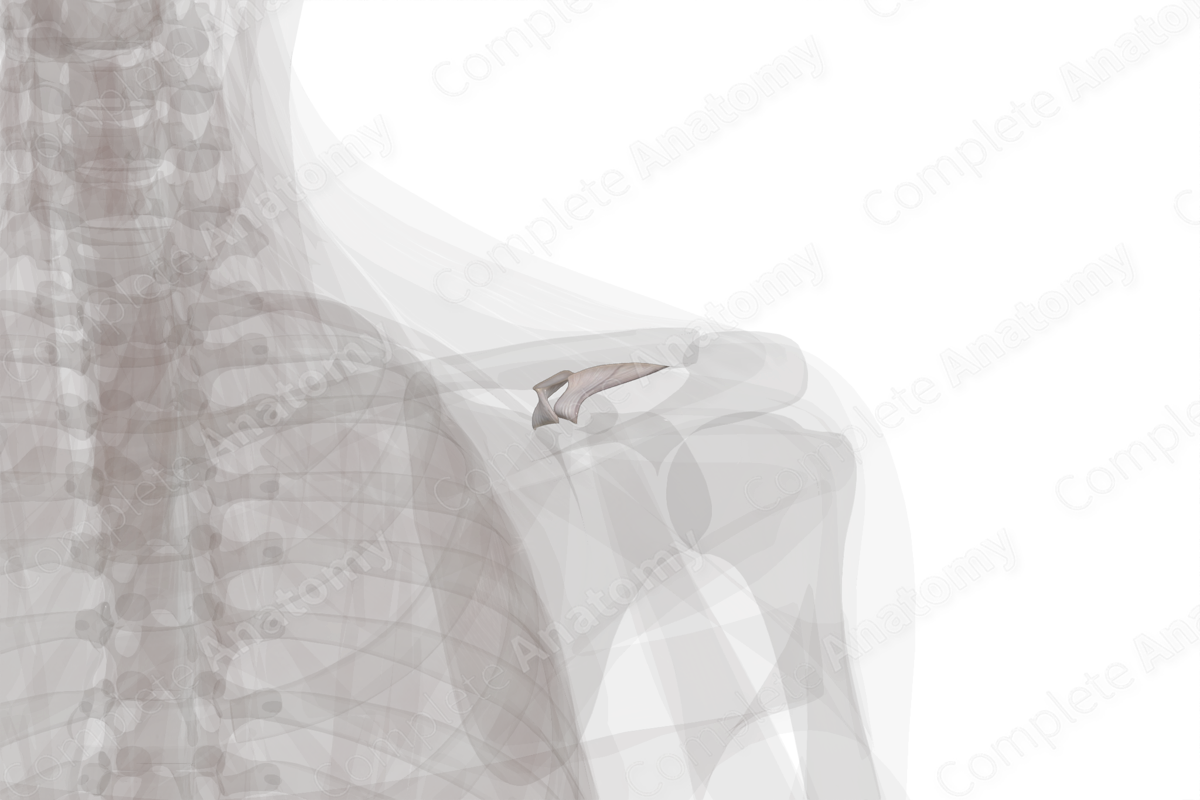
Anatomical Relations
As its name suggests, the coracoclavicular ligament attaches the posterior ascent of the coracoid process of the scapula to the inferior surface of the clavicle, lateral to the subclavian groove.
Related parts of the anatomy
Structure
The coracoclavicular ligament is composed of two parts, the trapezoid (lateral) and conoid (medial) parts, which are usually separated from each other by intervening fat or a bursa. The coracoclavicular ligament has been described as a fibrocartilaginous structure (Ockert et al., 2012).
Function
Although the coracoclavicular ligament is separate from the acromioclavicular joint, it is an important accessory ligament by helping maintain close apposition of the acromion to the clavicle. It also prevents excessive rotation of the clavicle and scapula.
References
Ockert, B., Braunstein, V., Sprecher, C., Shinohara, Y., Kirchhoff, C. and Milz, S. (2012) 'Attachment sites of the coracoclavicular ligaments are characterized by fibrocartilage differentiation: a study on human cadaveric tissue', Scand J Med Sci Sports, 22(1), pp. 12-7.
Learn more about this topic from other Elsevier products
Joint Ligament

Entheseal structures are widely located throughout the body and are represented by the interface between bone and several tissues including tendon, joint capsules and ligaments.




